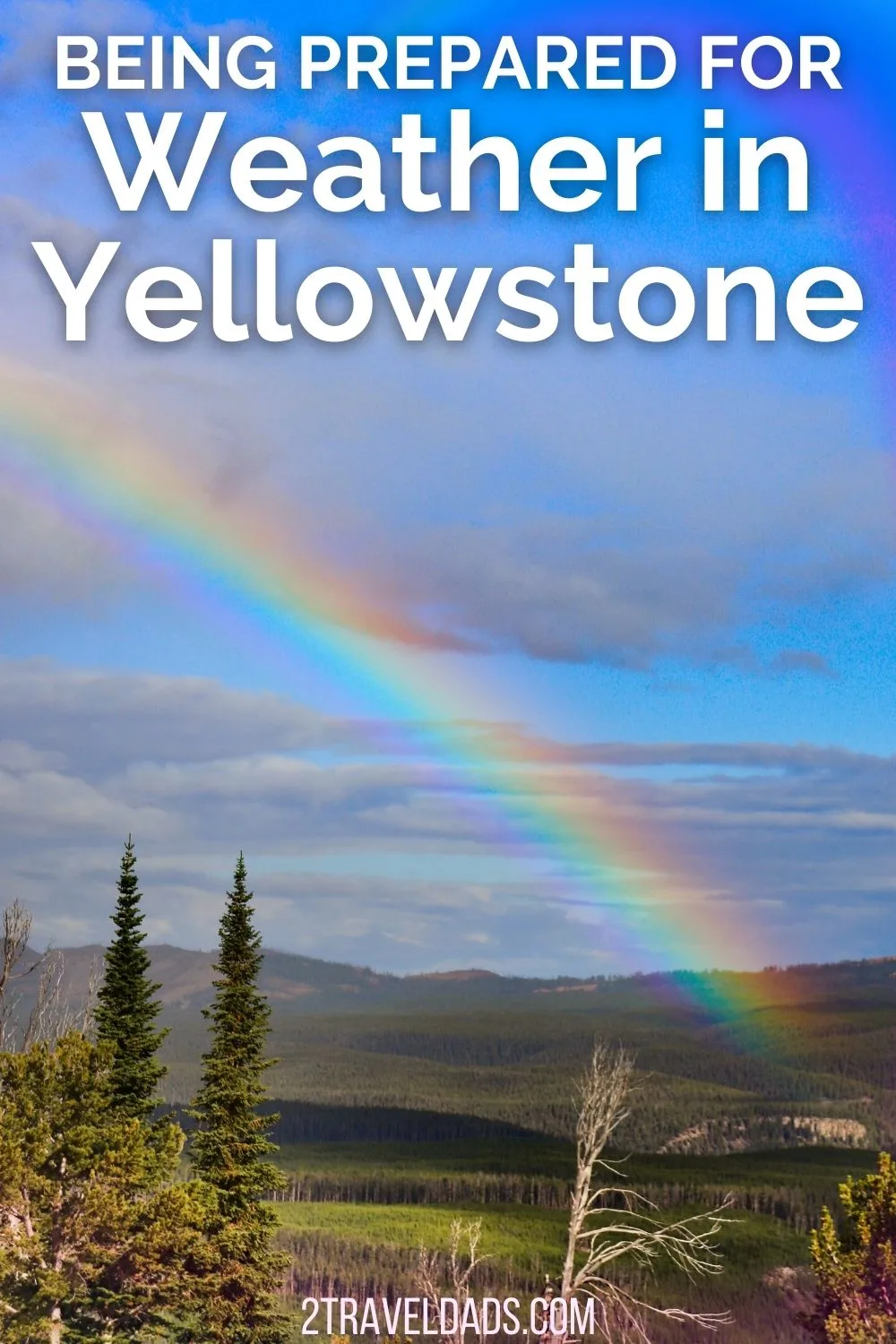You know how when you go to Vegas it’s blazing hot all day and you think you might die, and then you roll out at 4:00 am and you’re frozen? The same thing happens with the weather in Yellowstone National Park. The elevation mixed with the crazy weather patterns of the Rocky Mountains makes for a hit and miss battle with the elements. I remember as a kid being woken up in the middle of the night because our tent was flooding and then a few hours later we were in 4 inches of snow…in July. Drastic.
Here’s everything you need to know about the weather in Yellowstone when you’re visiting in any season, but especially in summer. From what to pack for camping to what you need to keep with you for day trips and hiking, we’ve got you covered for the pinata that is Yellowstone’s weather.
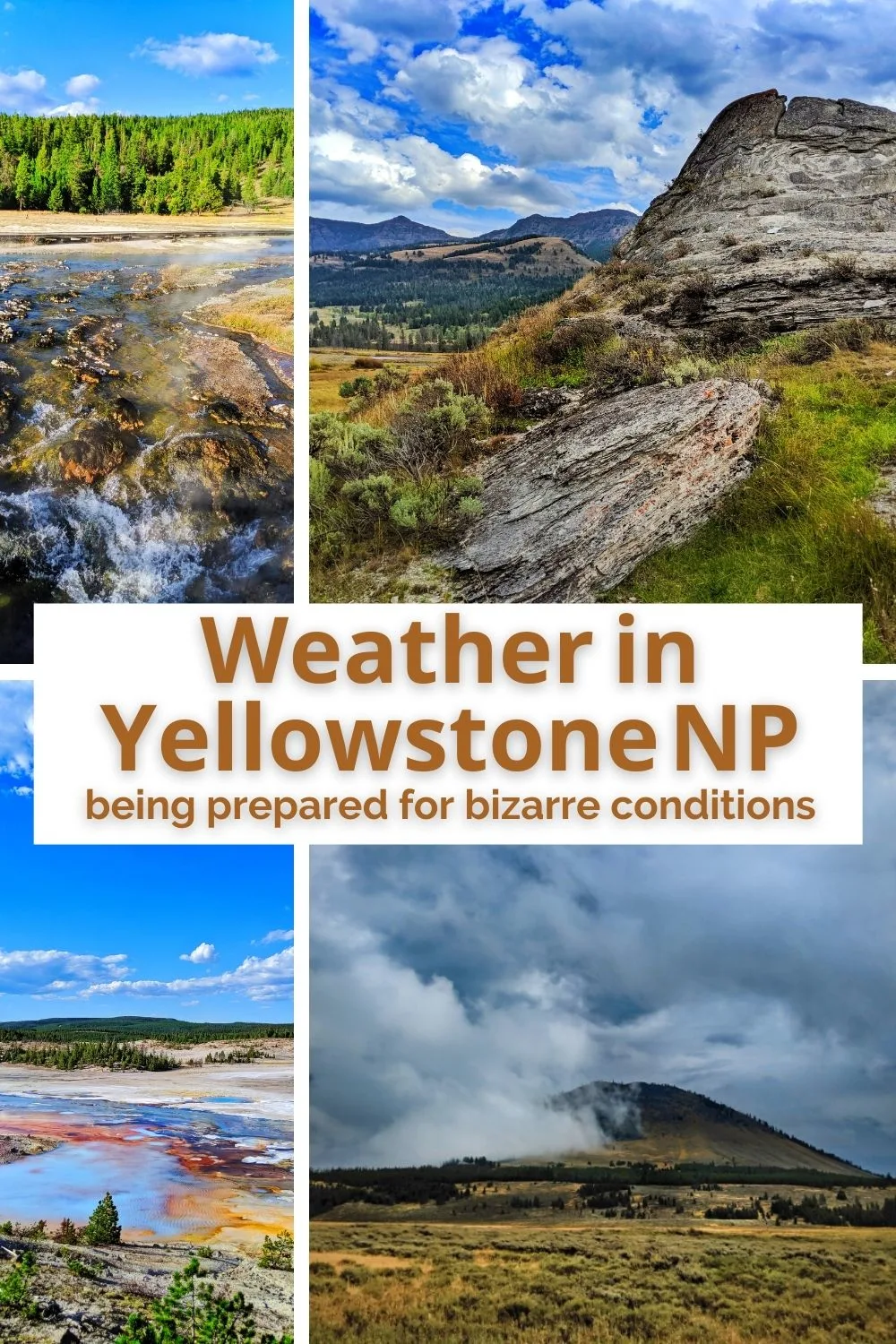
What is the Weather in Yellowstone Like?
Yellowstone National Park definitely has seasons. Unlike where we live in North Florida, Yellowstone gets legit snowfall. And unlike the Florida Keys, the weather in Yellowstone is NOT always over 80 degrees through the summer. It’s such a mixed bag.

Summer Weather in Yellowstone
The average temperatures in Yellowstone National Park in summer (late June- early September) are in the 70s and 80s during the day, but at night it can drop to below freezing. We’ve enjoyed the best weather at the end of August and into mid-September. This is the best time for picnicking in Yellowstone.
The worst summer weather in Yellowstone we’ve experienced was actually over a July 5-8 visit where we actually had two days of solid rain and then woke up to snow. The snow melted in the same day and the visit finished with weather in the 60s. We’ve also visited in July and seen it get over 90 degrees. See? It really can vary so much in summer months.
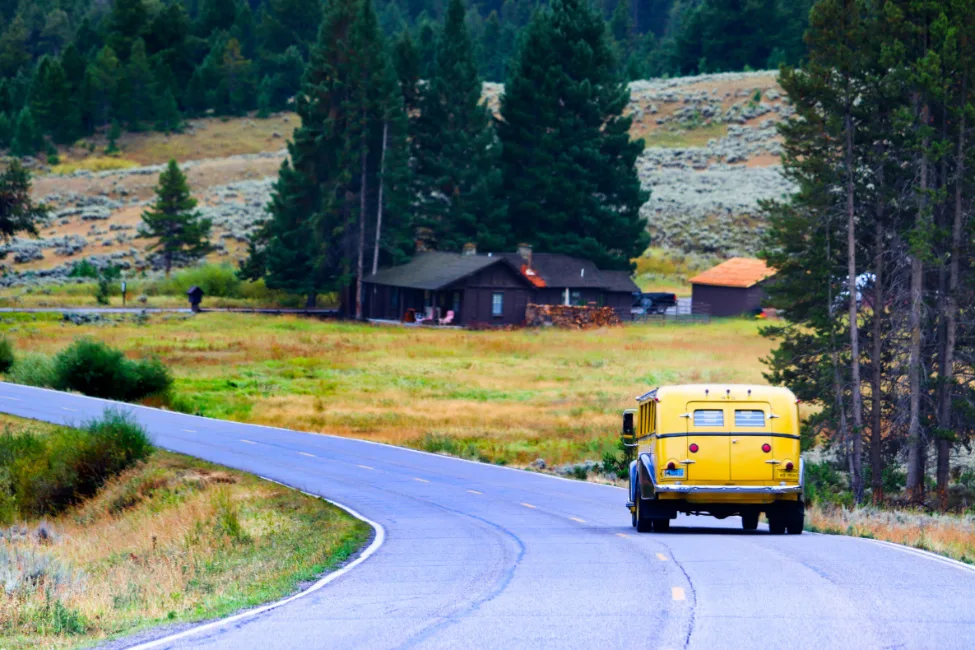
Autumn in Yellowstone
We love visiting Yellowstone National Park in fall. It’s one of our favorite National Parks to visit in autumn! The crowds are smaller, the roads are more clear, and the geysers of Yellowstone are just as active as ever. The temperatures are starting to drop, but if you’re visiting right at the start of fall, you may just get a hot day here and there still.
The weather in Yellowstone in fall does include a lot of rain, but it’s not that bad typically if you’re visiting in September. By October the rains become much more frequent, and the temps start dropping more quickly, with snow starting.
The big benefit to visiting Yellowstone in fall is the rutting. Autumn is mating season so the elk, bison and moose are very active and present. They’re also dangerous, so keep wildlife safety in mind when you visit Yellowstone in fall (or any time).
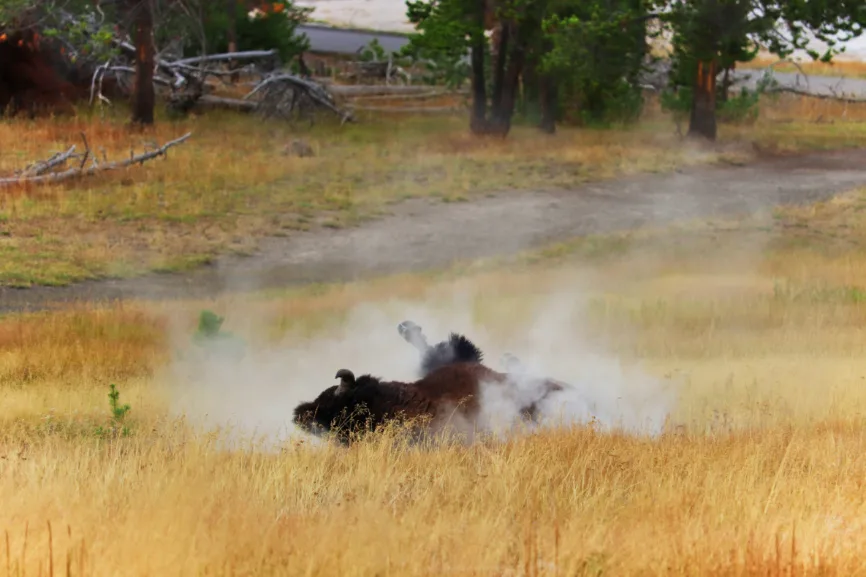
Spring and Winter in Yellowstone
Some people LOVE snow and also love Yellowstone National Park, so they make a point to visit in the winter months. While most of the park is inaccessible once the snow falls, special guided tours to Old Faithful and other areas are available. You can drive your own vehicle into the park via the Mammoth (Gardiner) or Silver Gate (Cooke City) entrances, but that’s weather permitting. You can’t drive in during the winter from Cheyenne, WY or West Yellowstone.
Since the weather in Yellowstone in the winter tends to be from 0 degrees F to around 20 degrees, you’ll need to take every safety and warmth precaution. A lot of visitors come into the park to see the wolves and other Yellowstone wildlife, and do so on cross country skiing routes or with snowshoes. If that’s of interest to you, have fun and be sure to tell us all about it, because it’s unlikely we’ll put that on our schedule any time soon.
The snow starts to melt in late April or early May and is mostly gone by June. It’ll still be chilly, with highs getting to 60 degrees on a warm day, so plan and pack appropriately.
Dressing for Weather in Yellowstone
Everybody everywhere knows that you should always dress in layers no matter where you are or what you’re doing. We start here because it’s of paramount importance and so easy to forget. The weather in Yellowstone National Park can turn quickly, so dressing in layers (and keeping those you shed close by) is important.
Our kids run warm, so it can be 40 degrees F outside and you see bare legs and a tank top. These same kids also run cold and I hear “I’m getting cooooooldd” when it’s 75 out. Living in Florida now, their little bodies get really confused when we’re anywhere that isn’t hot and humid, so we dress accordingly.
What this means in the wilderness: don’t let your kids overrule you about what clothes they want to wear or what spare clothes you bring. Bring options.
While it’s true that you’re not in your kids’ bodies and can’t tell 100% how they feel, don’t listen to them when they say “I’m fine. I don’t want to bring a coat.” Sweating in the sun one moment, shivering in the shade the next. True story.
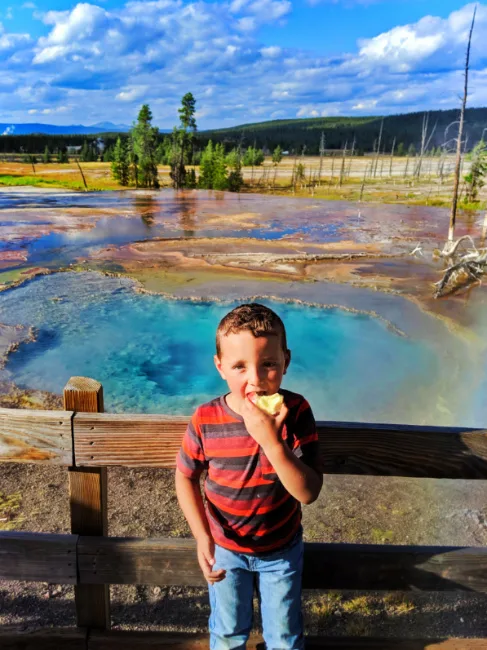
Camping in Yellowstone Weather
Wearing layers also goes for sleeping if you’re camping in Yellowstone. I don’t know about your kids, but our can’t stay IN a sleeping bag for anything, so wearing extra clothes at night is a must. When the temperature drops at night, the swing can be 40 degrees or more, and if they wiggle out of bed, they’ll be really cold.
In addition to being sure everyone is dressed warmly for bed, having good sleeping bags and gear is super import. We have high quality air mattresses that we sleep on, and then multilayer sleeping bags. This is ideal for both comfort and being flexible to the temperature changes with the weather in Yellowstone.
Tip: if you wake up in the night, check if your kids are still snuggled into a warm blanket or sleeping bag. It’s better to move a sleeping child back into bed than have them freeze.
We also enjoy the comfort of our camper to beat the cold temperature swing that happens. If you are planning on camping in Yellowstone with a camper trailer, that type of reservation needs to be made FAR in advance, so don’t waste time if you know that’s what you’d like to do.
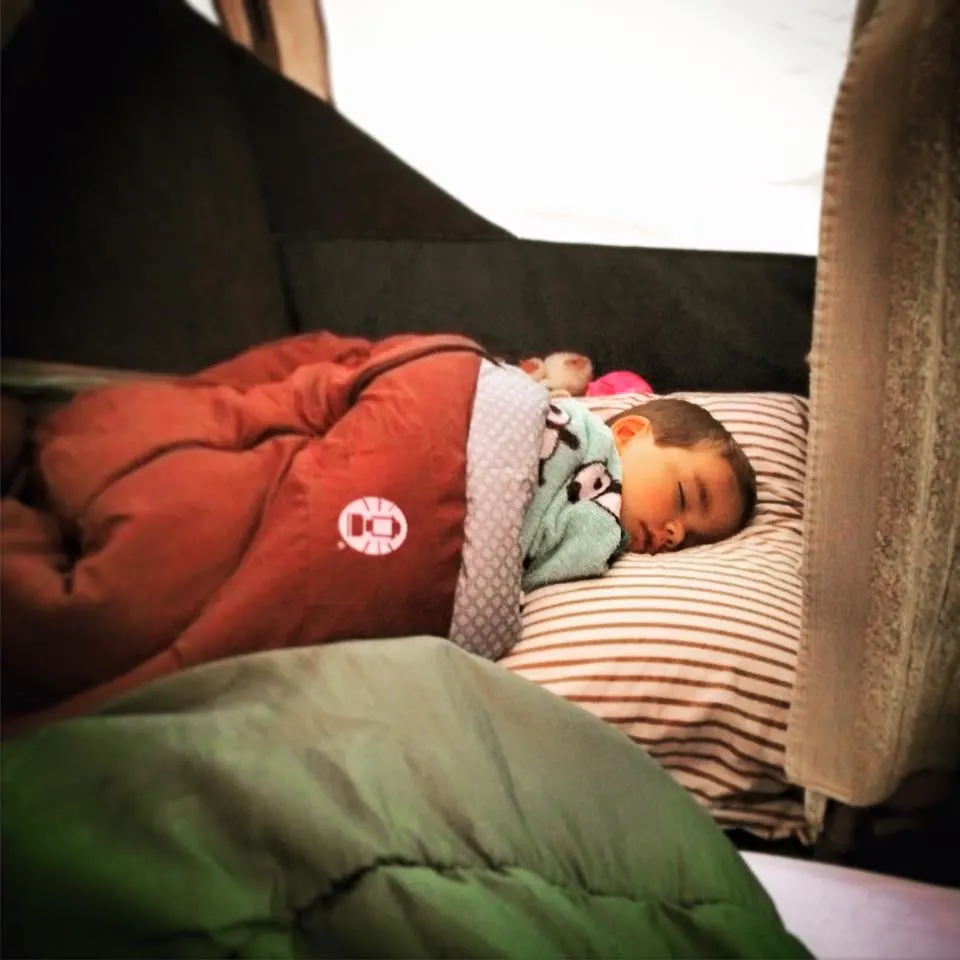
Packing to Be Prepared for Strange Weather
Hats, gloves, scarves, pajama suits, blankets, extra sleeping bags… These things are necessities for family camping. If you’re lodging it or have a cabin for the duration of your stay, congratulations, but you still need a few fuzzy things for when you’re out and about. Something that is a real life saver for kids puffy fleece. We choose puffy over sleek because it breathes well and also insulates well. If you’ve got the hot/cold kid, this is your ticket to happiness. You know, this is good for adults too.
Gloves, hats and scarves might seem like overkill when you’re packing at home in 80 degree weather, but when you get up early to see if there are bears in the nearby meadow, you’ll be really glad you could keep away the chill, especially knowing that you can ditch these items later.
Here’s the actual well-prepared packing list suitable to the changing weather in Yellowstone:
- sweatshirts, fuzzy sweaters and fleeces
- actual parkas or winter jackets
- thin gloves or mittens
- windbreaker or light jackets
- hats and stocking caps
As long and you have a wide variety of warmth options, you’ll be okay. The weather in Yellowstone is wild, and while you may luck out and it’s 72 degrees the whole time, that’s highly unlikely.
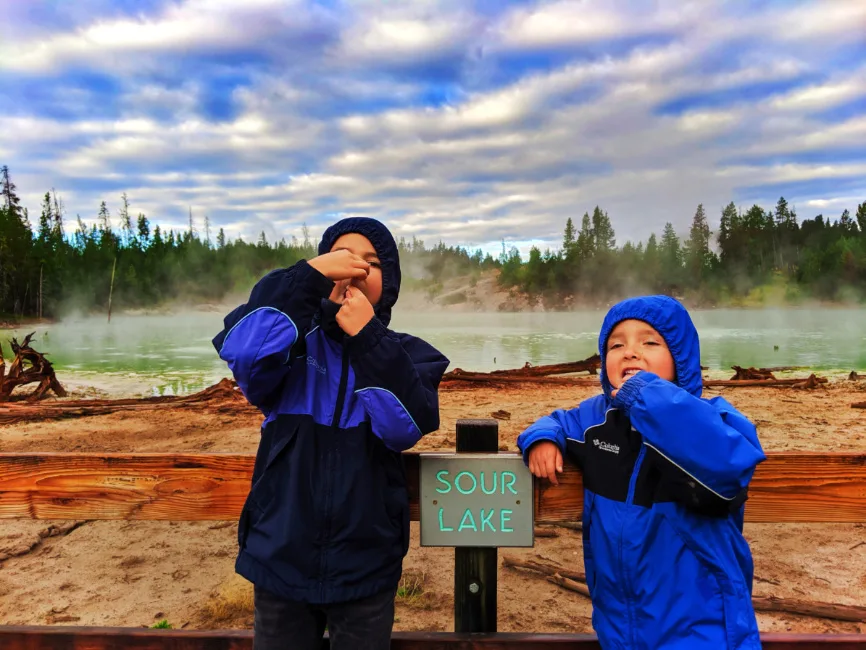
Purchasing Souvenirs for Warmth
Previously we’d written about bringing back thoughtful souvenirs, such as postcards, local art or shells. Another good souvenir is a token of warmth: a blanket, sweater or stocking cap. When you’re camping in or visiting the Rocky Mountains, no matter how you plan, the chances are good that you’ll purchase something like this.
If you’re going to buy something, take the time and spend the extra dollars to get a blanket that you’ll also use at home. Get a sweater that’s not tacky and you’ll enjoy in the fall and winter. Buy a stocking cap that you can take skiing or use on a future hiking trip. Be thoughtful about your purchase.
Tip: in places like Wyoming and Montana, there are many sheep ranches, so it’s not difficult to find high quality, locally sourced wool products. Support the local community by opting for these over a tacky blanket that was made overseas.
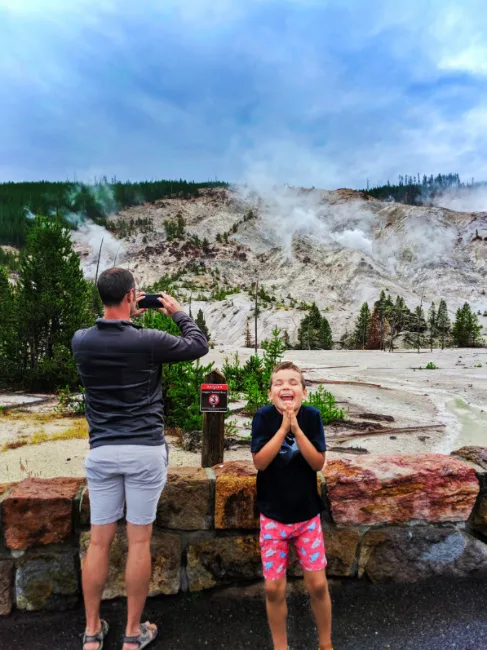
Ask for Help in Bad Weather
There is no shame in asking for help from Park staff. That means that if you don’t know how to actually build a campfire, ask a camp host or ranger for instructions or help (one time is enough). If you’re frozen and need something more than a blanket to warm you up, ask at the store if they’ve got hand-warmers. They may have to pull them from storage, but chances are they’ve got them.
Tip: camp hosts are present in almost every campground everywhere, including outside of National Parks. They are great resources for help, recommendations and up-to-date information about what’s happening in the area.
In the event that you get an out-of-season snow storm, which is totally possible and has happened to us, know your limits with driving and hiking in the snow. If you’re confident and are in a vehicle that’s appropriate for all-weather driving, proceed with caution and enjoy. Check with the park rangers though to be sure that the roads you plan on driving are open.
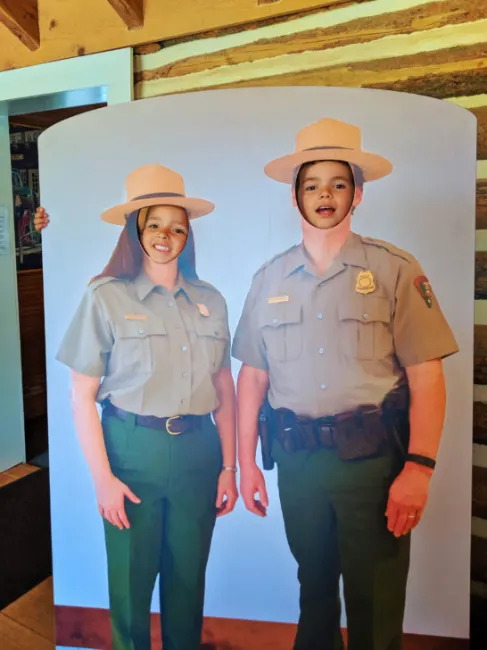
Hiking in Changing Weather in Yellowstone
Be mindful of the weather forecast when you’re in Yellowstone National Park. The park rangers update the forecast posting at the visitors centers throughout the day. If you’re planning on hiking in Yellowstone, check at the ranger station or visitors center to confirm conditions where you’re going. You DO NOT want to get stuck two hours into a hike when a rainstorm or even a quick snow flurry rolls through.
If you’re heading out hiking in Yellowstone, be sure to sign out on the hiking log at the trailhead where available. When there isn’t a log, we like to leave a note on our dashboard about the hike we’re on and when we plan to be back, and recommend you do the same. If you’re parked at a trailhead, people know why you’re there, so putting a note in your window isn’t an invitation to break into the car. Proceed at the level of risk you feel most comfortable.
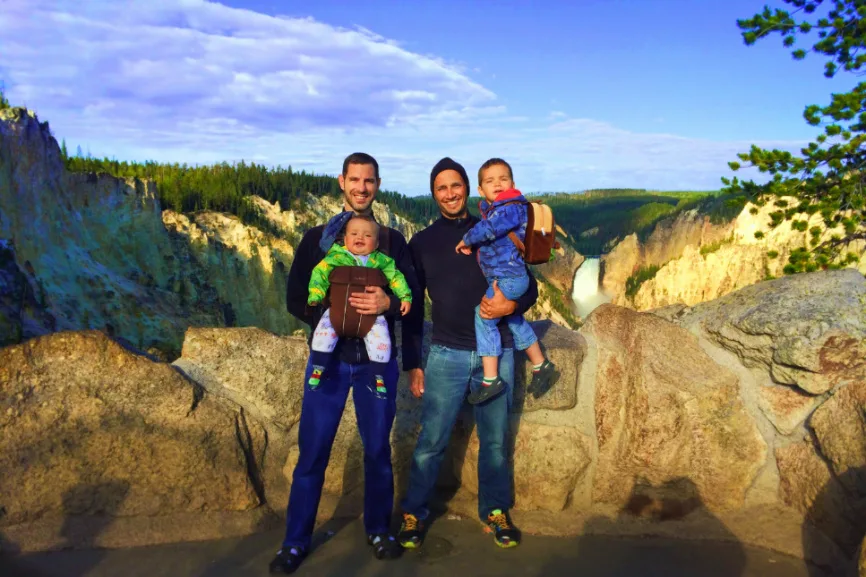
As you can tell, the weather in Yellowstone is both beautiful and unpredictable. Plan and pack well, and you’ll have a great visit. What other ways do you and your family ensure that you’re prepared for less than perfect weather? Leave tips in the comments or email us and we’ll add them.
